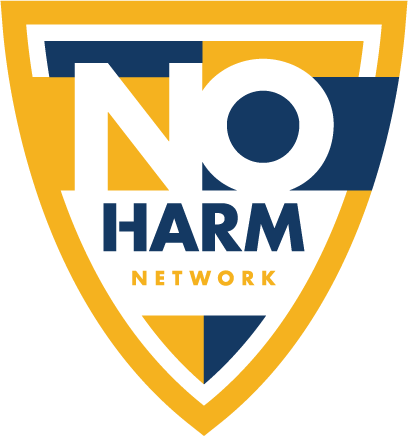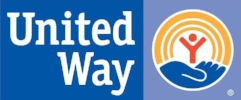Dallas Area Rapid Transit (DART) and New Friends New Life team up to "Put The Brakes on Human Trafficking" and help members of the community recognize the signs of human trafficking
Human trafficking is the use of force, fraud, or coercion to exploit someone for labor or commercial sex. Any minor exploited for commercial sex is a victim of human trafficking. Thousands of men, women, and children are trafficked in the United States every year. Many of these victims are lured from their homes with false promises of well-paying jobs; instead, they are forced into prostitution, involuntary domestic servitude, farm or factory labor, or other types of forced labor.
When does it become trafficking? When the victim is made to believe, by force, fraud, or coercion that he or she cannot quit and has no other choice but to continue to work.
· Force – Physical and/or sexual abuse; isolation or confinement to the place of work, labor camp or apartment supplied by the trafficker; monitoring of movement and communication.
· Fraud – Misrepresentation of the work, working conditions, wages, and immigration benefits of the job; non-payment, underpayment or confiscation of wages, documentation fraud.
· Coercion – Verbal abuse; threats of harm to the victim or the victim’s family members; threats of deportation or police involvement; isolation and many other ways.
Possible Trafficking Indicators
· Another person who seems controlling may accompany the person.
· The controlling person may insist on giving information or talking.
· The person has trouble communicating due to language or cultural barriers.
· The person’s identification documents (passport, driver’s license) may be held or controlled by someone else.
· The person may appear submissive or fearful or even defiant or aggressive.
· The person may be inadequately dressed for the situation or work done.
· The person exhibits any of the classic presentations found in trafficking victims
Classic Clues or Signs
Poor Mental Health or Abnormal Behavior
· Is fearful, anxious, depressed, submissive, tense, or nervous/paranoid
· Exhibits unusually fearful or anxious behavior at the mention
of law enforcement
· Avoids eye contact
Poor Physical Health
· Lacks health care
· Appears malnourished
· Shows signs of physical and/or sexual abuse, physical restraint, confinement, or torture
Lack of Control
· Has few or no personal possessions
· Is not in control of his/her own money
· Is not in control of his/her own identification documents (ID or passport)
· Is not allowed or able to speak for themselves
Other
· Claims of just visiting and inability to clarify where he/she is staying/address
· Lack of knowledge of whereabouts and/or do not know what city he/she is in
· Loss of sense of time
· Has numerous inconsistencies in his/her story
If you see any of these red flags, contact the National Human Trafficking Resource Center hotline at 1-888-3737-888 to report the situation. This list is not exhaustive and represents only a selection of possible indicators. In addition, the red flags in this list may not be present in all trafficking cases and are not cumulative. For more information visit: Polaris Project – www.polarisproject.org
Federal Anti-Trafficking Laws
The Trafficking Victims Protection Act (TVPA) of 2000 is the first comprehensive federal law to address trafficking in persons. The TVPA was reauthorized through the Trafficking Victims Protection Reauthorization Act (TVPRA) of 2003, 2005, and 2008. Under U.S. federal law, “severe forms of trafficking in persons” includes both sex trafficking and labor trafficking:
Sex trafficking is the recruitment, harboring, transportation, provision, or obtaining of a person for the purposes of a commercial sex act, in which the commercial sex act is induced by force, fraud, or coercion, or in which the person induced to perform such an act has not attained 18 years of age, (22 USC § 7102; 8 CFR § 214.11(a)).
Labor trafficking is the recruitment, harboring, transportation, provision, or obtaining of a person for labor or services, through the use of force, fraud, or coercion for the purposes of subjection to involuntary servitude, peonage, debt bondage, or slavery, (22 USC § 7102).
Each state has addition laws concerning human trafficking and more information is available at: http://www.polarisproject.org/what-we-do/policy-advocacy/current-laws
Industry wide awareness is key!
Some examples
Buses – local transportation for labor victims and victims of sex trafficking. Also involves distance transit on major carriers – especially young people who are going to "interviews" for jobs and do not know who they are meeting.
Taxis – especially common for pimps to use this method and make "deals" with drivers
Light rails – local transportation for both groups and individuals
Trains – similar to distance transit for victims
Airlines – children are easy to transport for traffickers, no documents required! Airline Ambassadors has been training and have located victims in transit. www.airlineamb.org
Ships – labor victims may be working on board cargo ships, and victims of sex trafficking may be places on cruise ships.
Trucking Industry - see http://truckersagainsttrafficking.org/. Industry may include drivers working with smugglers to bring loads across the US border. Victims of sex trafficking are often at truck stops.
ACTION Steps
RECOGNIZE signs, ASK questions, REPORT to authorities!
· Be observant of passengers as the check-in, especially children and those who accompany them or young women traveling alone.
· If a young person is traveling alone, ask the reason for their trip. If they have a promised job, ask the nature of the job and see if she knows the person who will be meeting her. False employment promises and modeling jobs common lures.
· If several of traits or indicators are present DO NOT CONFRONT the suspected traffickers or try to rescue suspected victims – but REPORT while in transit if possible- Safety first!
· Save 888-3737-888 in your phone to report activities to the Human Trafficking hotline.
· If you believe that person is in immediate danger, call 911 or implement your systems' emergency protocols. Have authorities meet you at next destination to investigate.
· HSI/ICE Tip line 866-347-2423 can also be used to report and request assistance or go to http://www.ice.gov/tips for International locations – call 802-872-6199.







